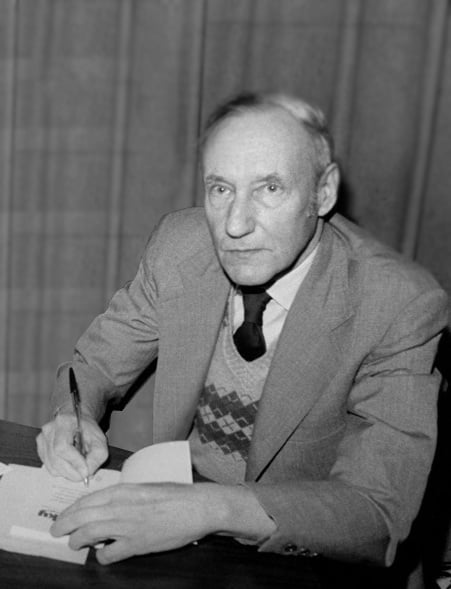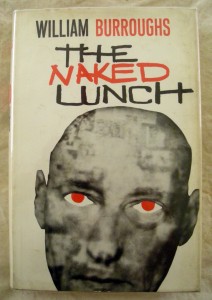This year, Mirror of the World features a selection of works by William Burroughs (1914–1997), who, in the centenary year of his birth, still casts a long shadow on literary and cultural landscapes. Writer, painter, performer, queer icon, drug addict – he epitomised the radical lives and aesthetics of the Beat generation. Burroughs wrote novels with themes shocking for the day (including his own homosexual experiences and drug use), written in a radical, Dadaist ‘cut-up’ style (where sentences are rearranged seemingly randomly, generating new and surprising meanings).
Born into wealth in Missouri, Burroughs studied English at Harvard before attending medical school in Vienna. Spiralling into depression and drug addiction, he moved to New York around 1943, befriending Jack Kerouac and Allen Ginsberg, the nucleus of the Beats.
In 1951 he was convicted of the manslaughter of his common-law wife Joan Vollmer, shot during a drunken game of ‘William Tell’ (Burroughs claimed he was aiming for a glass of water balanced on her head). Fleeing to the permissive environments of Mexico and Morocco, he began writing to escape the demons that haunted him.
In Tangiers, Morocco, Burroughs met artist and writer John Clifford Brian (known as Brion) Gysin, where Gysin ran the ‘1001 Nights’ nightclub. They both moved to Paris and became regulars at the Beat Hotel, so nicknamed by fellow Beat writer Gregory Corso. It was here that Gysin and Burroughs together rediscovered and extended the Dadaist collage technique of ‘cut-up’, which Gysin employed in his visual art and Burroughs in his writing, most famously in The naked lunch.
The 1962 publication of this book, with its graphic descriptions of sadomasochistic sex and drug-taking, triggered a landmark obscenity trial that changed America’s approach to literary censorship. Henceforth, the concept of obscenity in American law was redefined to exclude works of ‘artistic merit’.
Burroughs died at his home in Kansas after suffering a heart attack in 1997. His diaries, letters and hitherto-unpublished manuscripts continue to attract publication and attention.
These books will be on display until October 2015.
http://youtu.be/3TC6V6D8yUs




